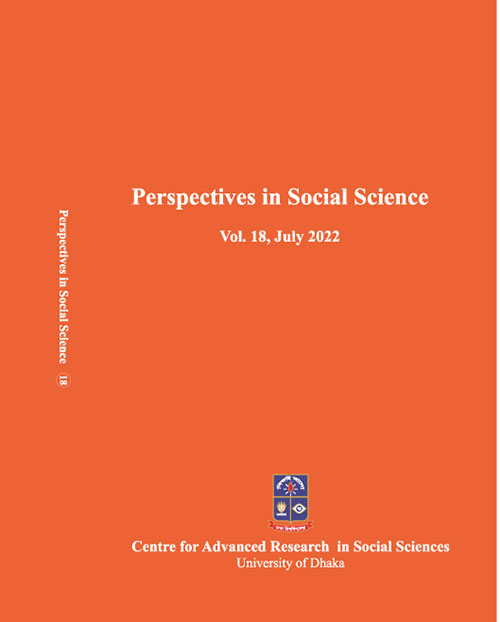Socioeconomic Development in Bangladesh: Issues and Challenges
Muhammad Shahadat Hossain Siddiquee, Nayeema Nusrat Choudhury and Azima Begum
Published Date : 12-Jun-2024
Social Sciences Perspective
Vol. 18 July 2022
DOI: https://doi.org/10.59146/pss.v18.7535
ISSN : 2957-5001 (Print)
Vol. 18 July 2022
DOI: https://doi.org/10.59146/pss.v18.7535
ISSN : 2957-5001 (Print)
Abstract
Although Bangladesh was termed as the ‘test case’ or ‘international basket case’ due to its miserably low levels of socioeconomic development indicators during the post-independence period after 1971, at its golden jubilee in 2021, Bangladesh has proved such doubts mostly incorrect due to its major successes in economic indicators such as per capita income, remittance, export earnings, foreign exchange reserve, agricultural production, and inflation control since the 1990s. The resultant outcome of economic development has been reflected in social development indicators of the health and education domains such as fertility, mortality (i.e., neonatal, infant, child and maternal mortality), life expectancy at birth, gender parity index, youth literacy, female to male ratio at primary, secondary and tertiary education and student-teacher ratio among others. Despite such achievements in socio- economic development indicators, the article draws attention to the fact that the reduction in inequality in social and economic dimensions measured in terms of health, education, women empowerment, ownership of land, income, and societal opportunities carry onto pose daunting obstacles for Bangladesh—notably the high level of rich-poor and urban–rural disparities. Therefore, the Bangladesh government would require an inclusive action plan and effective implementation of those plans to sustain per capita GDP growth, empower marginalized segments of the population, ensure equity and equality and reduce inequalities in social and economic development indicators.
Keywords Social Development, Economic Development, Socioeconomic Development, Health Development, Education Development, Bangladesh
Download PDF


